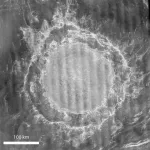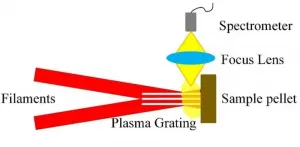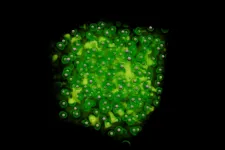'Be a man': Why some men respond aggressively to threats to manhood
Fragile sense of masculinity, or reliance on others' views, triggers a macho response
2021-01-28
(Press-News.org) DURHAM, N.C. -- When their manhood is threatened, some men respond aggressively, but not all. New research from Duke University suggests who may be most triggered by such threats - younger men whose sense of masculinity depends heavily on other people's opinions.
"Our results suggest that the more social pressure a man feels to be masculine, the more aggressive he may be," said Adam Stanaland, a Ph.D. candidate in psychology and public policy at Duke and the study's lead author.
"When those men feel they are not living up to strict gender norms, they may feel the need to act aggressively to prove their manhood -- to 'be a man'."
The pair of studies considered 195 undergraduate students and a random pool of 391 men ages 18 to 56.
Study participants were asked a series of questions about "gender knowledge." For men, these included questions on such stereotypical topics such as sports, auto mechanics and home repair. After answering, participants were randomly told their score was either higher or lower than that of an average person of their gender.
To simulate real-world threats to manhood, men who received a low score were also told they were "less manly than the average man."
After receiving their quiz scores, study participants were asked to complete a series of word fragments by adding missing letters, in order to reveal their state of mind. The results were striking, revealing aggressive thoughts among certain men but not others.
Men whose sense of masculinity came from within seemed unruffled by receiving a low score. It was a different story for men with a more fragile sense of masculinity, whose feelings of masculinity relied on others. That group included men who said they behaved "like a man" due to social pressures such as the desire to fit in, be liked or get dates.
Men with a more fragile sense of masculinity responded to the word fragments by creating words with violent associations rather than neutral meanings. For instance, when provided with the letters "ki" and asked to complete the word, they wrote "kill" rather than, say, "kiss." When given the letters "blo," they typed "blood" instead of a word such as "blow" or "bloom."
Those aggressive responses were strongest among the youngest study participants, men between 18 and 29 years old. The response was milder among middle-aged men between ages 30 and 37, and milder still among the oldest group of participants, men ages 38 years old and older.
"It's clear that younger men are more sensitive to threats against their masculinity," Stanaland said.
"In those years, as men attempt to find or prove their place in society, their masculine identity may be more fragile. In many places, this means that younger men are hit constantly with threats to their manhood. They have to prove their manhood every day of their lives."
Female students did not display a similar aggressive response when their gender was threatened.
Men's aggressive responses didn't end with the study questionnaire, the researchers noted. The study designers received violent threats from some men who received low scores - further evidence that the study hit a nerve.
Stanaland said he hopes to delve further into the forces that shape men's aggression.
"Men report aggressive behavior in all sorts of domains," Stanaland said. "Some of them are trying to prove their own manhood by being aggressive.
"Men's violence, terrorism, violence against women, political aggression - fragile masculinity may explain many of these behaviors. It's in everyone's interest to understand this phenomenon better."
INFORMATION:
The research was funded by the Charles Lafitte Foundation Program in Psychological Research at Duke University.
CITATION: "'Be a Man': The Role of Social Pressure in Eliciting Men's Aggressive Cognition," Adam Stanaland and Sarah Gaither. January 2021, Personality and Social Psychology Bulletin.
DOI: https://doi.org/10.1177/0146167220984298
ELSE PRESS RELEASES FROM THIS DATE:
2021-01-28
Tiny molecular forces at the surface of water droplets can play a big role in laser output emissions. As the most fundamental matrix of life, water drives numerous essential biological activities, through interactions with biomolecules and organisms. Studying the mechanical effects of water-involved interactions contributes to the understanding of biochemical processes. According to Yu-Cheng Chen, professor of electronic engineering at Nanyang Technological University (NTU), "As water interacts with a surface, the hydrophobicity at the bio-interface mainly determines the mechanical equilibrium ...
2021-01-28
PROVIDENCE, R.I. [Brown University] -- At some point between 300 million and 1 billion years ago, a large cosmic object smashed into the planet Venus, leaving a crater more than 170 miles in diameter. A team of Brown University researchers has used that ancient impact scar to explore the possibility that Venus once had Earth-like plate tectonics.
For a study published in Nature Astronomy, the researchers used computer models to recreate the impact that carved out Mead crater, Venus's largest impact basin. Mead is surrounded by two clifflike faults -- rocky ripples frozen in time after the basin-forming impact. The models showed that for those rings to be where they ...
2021-01-28
BOSTON-Boston Medical Center has released a study that shows post overdose outreach programs in Massachusetts have expanded across the state, as 44 percent of municipalities reported having such programs available - a majority established since 2015 - to reduce risks for those who survive an overdose. The results are published online in the February 2021 issue of Drug and Alcohol Dependence.
These post-overdose outreach programs leverage collaborations between public health overdose prevention practitioners and public safety organizations (police, fire, EMS) to engage overdose survivors and/or their social networks (family, friends, and acquaintances) at their home one to three days after an overdose. ...
2021-01-28
Laser-induced breakdown spectroscopy (LIBS) is a rapid chemical analysis tool. A powerful laser pulse is focused on a sample to create a microplasma. The elemental or molecular emission spectra from that microplasma can be used to determine the elemental composition of the sample.
Compared with more traditional technology, like atomic absorption spectroscopy and inductively coupled plasma optical emission spectroscopy (ICP-OES), LIBS has some unique advantages: no sample pretreatment, simultaneous multi-element detection, and real-time noncontact measurements. These advantages make it suitable for practical analysis of solids, gases, and liquids.
Traditional LIBS and extensions
Traditional ...
2021-01-28
The study of warm dense matter helps us understand what is going on inside giant planets, brown dwarfs, and neutron stars. However, this state of matter, which exhibits properties of both solids and plasmas, does not occur naturally on Earth. It can be produced artificially in the lab using large X-ray experiments, albeit only at a small scale and for short periods of time. Theoretical and numerical models are essential to evaluate these experiments, which are impossible to interpret without formulas, algorithms, and simulations. Scientists at the Center for Advanced Systems Understanding (CASUS) at the Helmholtz-Zentrum Dresden-Rossendorf (HZDR) have now developed a method to evaluate such ...
2021-01-28
With a powerful enough light, you can see things that people once thought would be impossible. Large-scale light source facilities generate that powerful light, and scientists use it to create more durable materials, build more efficient batteries and computers, and learn more about the natural world.
When it comes to building these massive facilities, space is money. If you can get higher-energy beams of light out of smaller devices, you can save millions on construction costs. Add to that the chance to significantly improve the capabilities of existing light sources, and you have the motivation behind a project that has brought scientists at three U.S. Department of Energy national laboratories together.
This team has just achieved an important milestone ...
2021-01-28
Attempts to identify the genetic causes of neuropsychiatric diseases such as post-traumatic stress disorder (PTSD) through large-scale genome-wide analyses have yielded thousands of potential links. The challenge is further complicated by the wide range of symptoms exhibited by those who have PTSD. For instance, does extreme arousal, anger, or irritation experienced by some have the same genetic basis as the tendency to re-experience traumatic events, another symptom of the disorder?
A new study led by researchers at Yale and the University of California-San Diego (UCSD) provides answers to some of these questions and uncovers intriguing genetic similarities between PTSD and other mental health disorders such as anxiety, bipolar disorder, and schizophrenia. ...
2021-01-28
Washington, DC - January 28, 2021 - Self swabs and caregiver swabs are effective at detecting multiple pathogens and are just as accurate as those taken by healthcare workers, according to a team of Australian researchers. The research appears in the Journal of Clinical Microbiology, a publication of the American Society for Microbiology.
"Across the range of pathogens and swab types, there was high agreement between results from self- or caregiver swabs and those performed by a healthcare worker, even when different sites were swabbed (e.g. nasopharyngeal vs. nasal)," said principal investigator Joshua Osowicki, BMedSci, MBBS, FRACP, a Pediatric Infectious Diseases physician in the Murdoch Children's Research Institute's ...
2021-01-28
Despite long-standing ideas about the importance of thumb evolution in tool use and development, questions remain about exactly when human-like manual dexterity and efficient thumb use arose--and which hominin species was the first to have this ability. Now, researchers who've analyzed the biomechanics and efficiency of the thumb across different fossil human species using virtual muscle modeling have new insight into when these abilities first arose and what they've meant for the development of more complex human culture. The findings, appearing January 28 in the journal Current Biology, suggest that a fundamental aspect of human thumb opposition first appeared approximately 2 million years ago and was not found ...
2021-01-28
What makes one person drive above the speed limit while another navigates steadily in the right lane? What motivates someone to leave a job with a steady paycheck to launch their own business while the other sticks to one employer for an entire career?
"People have different tendencies to engage in behavior that risks their health or that involve uncertainties about the future," says Gideon Nave, an assistant professor of marketing in Penn's Wharton School.
Yet explaining the origin of those tendencies, both in the genome and in the brain, has been challenging for researchers, partly because previous studies on ...
LAST 30 PRESS RELEASES:
[Press-News.org] 'Be a man': Why some men respond aggressively to threats to manhood
Fragile sense of masculinity, or reliance on others' views, triggers a macho response




